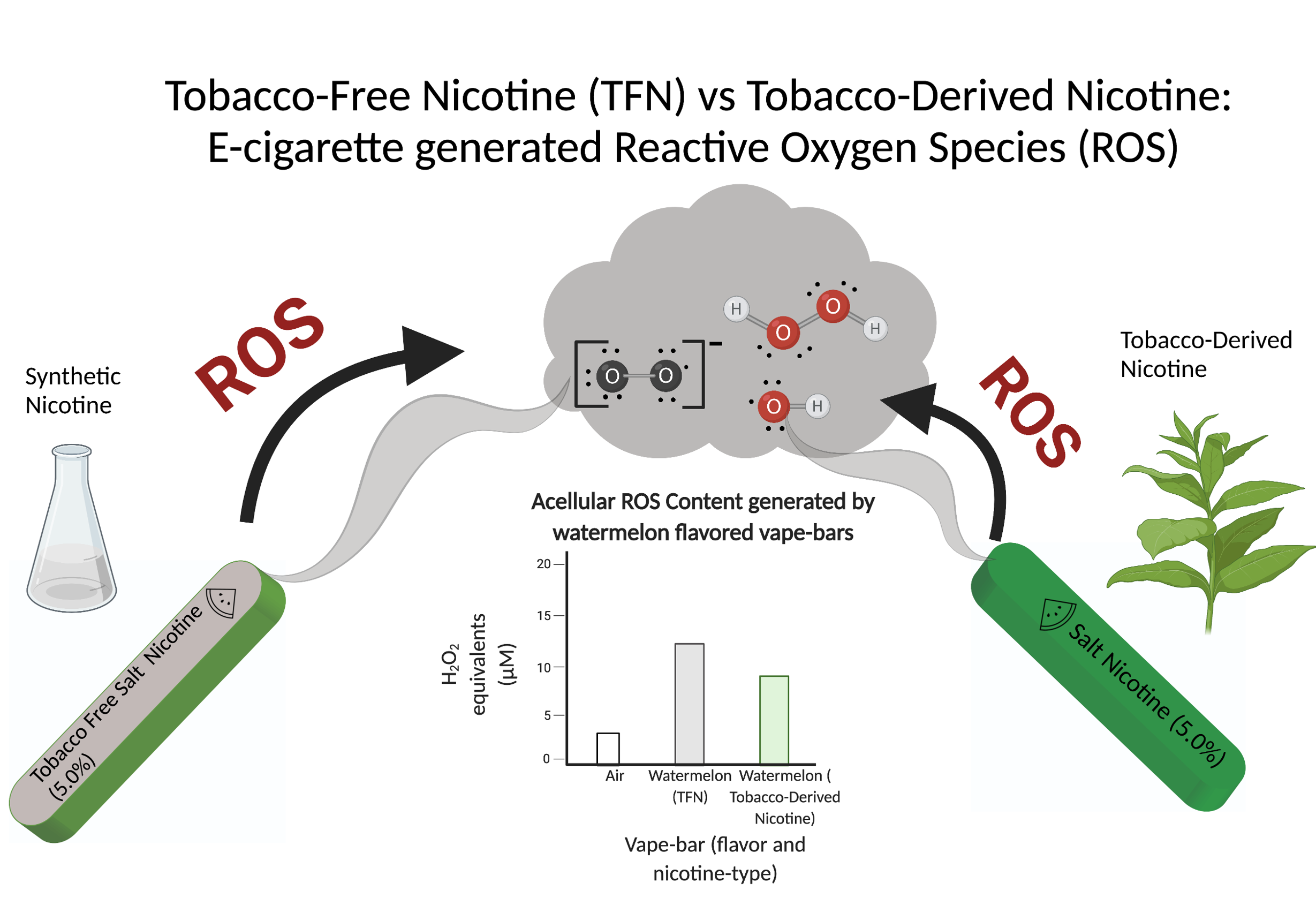Tobacco Free Nicotine (TFN) Electronic Nicotine Delivery Systems (ENDS) are yet to be classified as tobacco products; consequently, there is ambiguity over whether Food and Drug Administration (FDA) regulatory authority can be extended to include TFN e-cigarettes. In recent years, a more significant number of e-cigarette companies have been manufacturing TFN-containing e-cigarettes and e-liquids to circumvent FDA regulations. While studies have shown that aerosols generated from tobacco-derived nicotine-containing e-cigarettes contain significant Reactive Oxygen Species (ROS) levels, no comparison studies have been conducted using TFN e-cigarettes. This study uses a single puff aerosol generator to aerosolize TFN and tobacco-derived nicotine-containing vape-products and subsequently involves semi-quantifying ROS generated by these vape products in H2O2 equivalents. We found that the differences between ROS levels generated from TFN and tobacco-derived nicotine-containing vape products vary by flavor. TFN tobacco flavors and fruit flavors are more toxic in terms of ROS generation than menthol/ice and drink/beverage flavored products using TFN. The type of salt nicotine used in vape products, TFN or tobacco-derived nicotine, impacts the level of ROS generated from flavored vape products. Thus, a better understanding of the type of salt nicotine used in e-cigarettes (tobacco-derived or synthetic), has modulating effect on lung oxidative stress.

